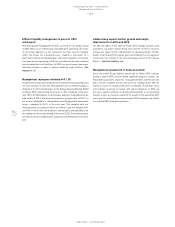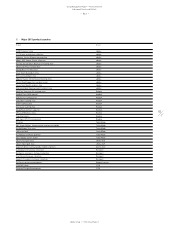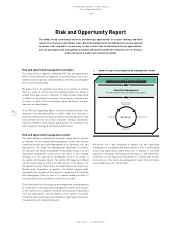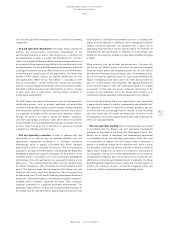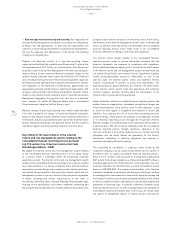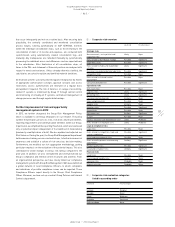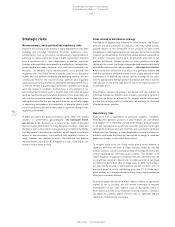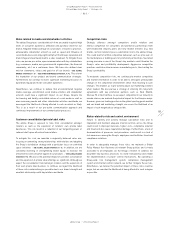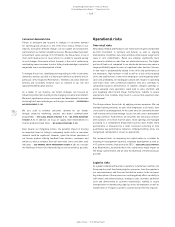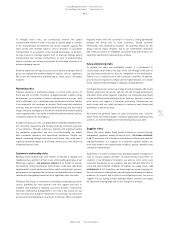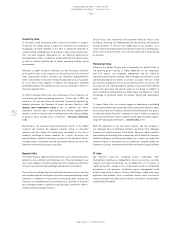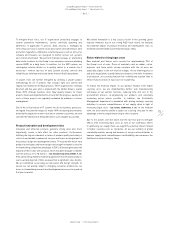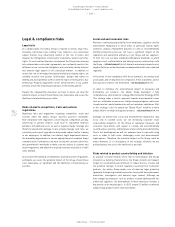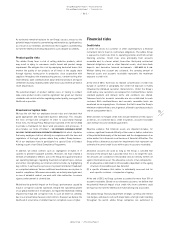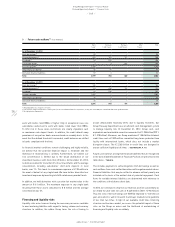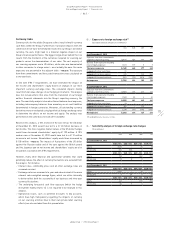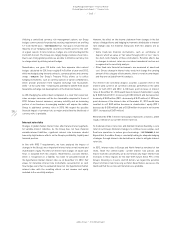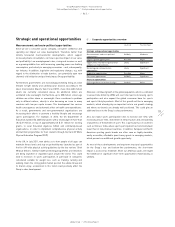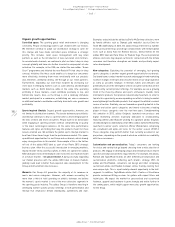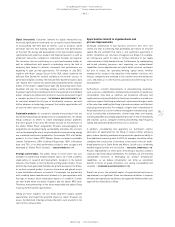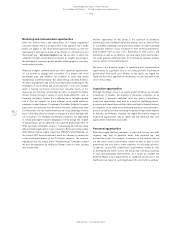Reebok 2012 Annual Report Download - page 194
Download and view the complete annual report
Please find page 194 of the 2012 Reebok annual report below. You can navigate through the pages in the report by either clicking on the pages listed below, or by using the keyword search tool below to find specific information within the annual report.
adidas Group
/
2012 Annual Report
Group Management Report – Financial Review
172
2012
/
03.5
/
Risk and Opportunity Report
/
Operational risks
Inventory risks
As we place initial production orders around six months in advance
of delivery, the adidas Group is exposed to inventory risks relating to
misjudging consumer demand at the time of production planning. A
sudden decline in demand has the potential to cause excess inventories.
This can have negative implications for our financial performance,
including higher levels of clearance activity and inventory obsolescence
as well as reduced liquidity due to higher operating working capital
requirements.
Similarly, a sudden increase in demand can lead to product shortfalls
at the point of sale. In this situation, our Group faces the risk of missed
sales opportunities and/or customer and consumer disappointment,
which could lead to a reduction in brand loyalty and hurt our reputation
as an on-time, in-full supplier. In addition, the Group faces potential
profitability impacts from additional costs such as airfreight in efforts to
speed up replenishment.
In order to mitigate these risks, we continuously strive to improve our
forecasting and material planning processes. To that end, in 2012, we
started to roll out and follow an enhanced forecasting approach by
aligning processes and timelines of major business functions
/
SEE
INTERNAL GROUP MANAGEMENT SYSTEM, P. 124. In addition, our Global
Operations function offers sophisticated and tailored replenishment
models in order to shorten order-to-delivery times, ensuring availability
of products while avoiding excess inventories
/
SEE GLOBAL OPERATIONS,
P. 100.
Nevertheless, the expected over-proportionate growth of the Retail
segment will increase the exposure towards swings in consumer
demand, and also makes the Group more susceptible to the risk of
inventory shrinkage or excess inventory. As a result, we assess the
potential impact related to inventory clearance to be significant. Due to
our tight control of inventory over the past twelve months, we assess the
likelihood of materialising only as possible.
Hazard risks
The adidas Group is exposed to external risks such as natural disasters,
epidemics, fire, accidents and malicious acts. Physical damage to our
own or our suppliers’ premises, production units, warehouses and stock
in transit can lead to property damage and business interruption.
These risks are mitigated by loss prevention measures such as working
with reliable suppliers and logistics providers who guarantee high safety
standards. In addition to the insurance coverage we have secured, the
Group has also implemented loss prevention (e.g. sprinklers in facilities)
and contingency plans to quickly recover business activities in order to
minimise potential negative effects.
Should those risks materialise, the potential financial impact could
be major, reflecting the fundamental and devastating consequences
natural disasters or terrorist acts might have on our business. As a
result of the increasing frequency of natural disasters (e.g. earthquakes,
floods, etc.) around the world, we assess the likelihood of materialising
as possible.
Personnel risks
Achieving the adidas Group’s goal of becoming the global leader in
the sporting goods industry is highly dependent on our employees
and their talents. Low employee engagement and the failure to
maintain a performance-oriented culture amongst our workforce could
substantially impede our ability to achieve our goals. The loss of key
personnel in strategic positions is also an obvious risk to our success. We
also face the risk of being unable to identify, recruit and retain talented
people who best meet the specific needs of our Group. In addition, a
lack of sufficient training measures might cause the dilution of critical
knowledge, in particular within the product design and development
area.
To reduce these risks, we strongly engage in developing a motivating
working environment and actively promote a way of working that is open,
honest, fact-based, non-political, efficient and collaborative. Our goal is
to make the adidas Group the “employer of choice” within our industry.
Attractive reward and incentive schemes are designed to further support
long-term employee commitment
/
SEE EMPLOYEES, P. 111.
With the expansion of our own-retail activities and the increase of
our employee base in emerging markets, we believe that employee
turnover will slightly increase in the future. Moreover, labour markets
are becoming increasingly more competitive, with the battle for the most
talented employees constantly intensifying. As a result, we regard the
potential impact of personnel risks as significant. However, given our
numerous activities, we believe the likelihood of materialising is unlikely.
IT risks
Key business processes, including product marketing, order
management, warehouse management, invoice processing, customer
support and financial reporting, are all dependent on IT systems. A
significant systems outage or loss of data could result in considerable
disruptions to our business. Insufficient project management could
delay the execution of projects critical to the Group or make them more
expensive than planned. Virus or malware attacks could also lead to
systems disruption and may result in the loss of business-critical and/or
confidential information.


